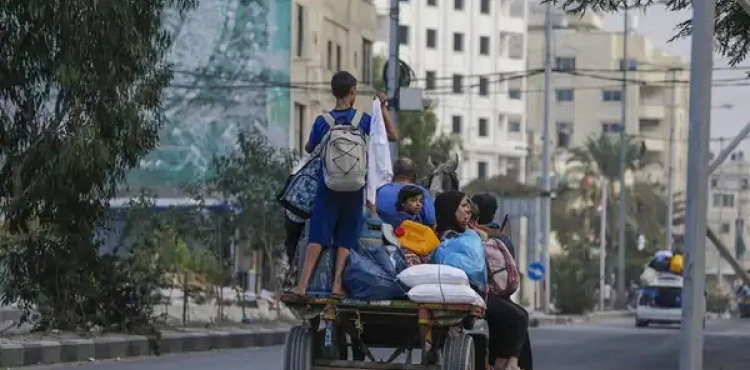Today, Wednesday, the authorities in Gaza, the Hamas movement, and international organizations presented figures showing the extent of the humanitarian catastrophe and destruction resulting from the continuous Israeli bombing of the Strip for more than a month.
The head of the government information office in Gaza, Salama Marouf, said that Israel is waging a starvation war on the residents of the besieged Strip, in which it does not differentiate between the residents of the north and the south.
Marouf warned - in an interview with Al Jazeera - that signs of malnutrition and dehydration had begun to spread among children in Gaza.
He pointed out that the aid trucks that have entered the Gaza Strip so far are equivalent to what was entering in one day before the war, explaining that the loads of those trucks do not respond to the real and urgent needs of the residents of the Gaza Strip.
Water and electricity
In Beirut, Hamas leader Bassem Naim said that potable water in Gaza has been lost by more than 90%.
Naim added - in a joint press conference with the movement’s representative in Lebanon, Osama Hamdan - that the residents of Gaza are often forced to resort to seawater, which causes them diseases.
He pointed out that since the beginning of the aggression, the Israeli occupation has deliberately cut off water to the Gaza Strip in a crime against humanity, saying that it is a shame for the international community to allow the occupation to use water to blackmail the residents of Gaza.
The Hamas leader also said that the residents of Gaza are suffering from a stifling crisis in providing a loaf of bread due to the occupation’s bombing of bakeries.
Naim accused the United Nations Relief and Works Agency for Palestine Refugees (UNRWA) of colluding with Israel by neglecting its role established by international laws, calling on the global community and the United Nations not to submit to the will of the occupation.
The Hamas leader indicated that 2% of Gaza's population had become either martyrs, wounded, or missing.
For his part, Jalal Ismail, head of the Palestinian Energy Authority in Gaza, said that 70% of the electricity transmission and distribution networks in the Strip were destroyed by the ongoing Israeli war.
Ismail added that losses in the electricity sector in Gaza are estimated at more than $80 million.
Hospitals stopped
Also on the humanitarian level, Enas Abu Khalaf, head of the media office of Doctors Without Borders, said that more than 40% of hospitals in Gaza have stopped serving.
In an interview with Al Jazeera, Abu Khalaf called for a ceasefire as it was the only way out of the humanitarian crisis in the Strip.
In this context, the spokesman for the Ministry of Health in Gaza, Ashraf Al-Qudra, warned of the escalation of the occupation’s threats to hospitals and the repeated request to evacuate the Rantisi Children’s Hospital, calling on the Red Cross to come inside the hospitals to protect them from the occupation.
He called for the ability to work to provide humanitarian corridors for aid and fuel to enter, to allow the exit of the wounded, and for medical teams of all specialties to enter.
Destruction of housing units
On another topic, the United Nations Special Rapporteur on the right to freedom of expression, Irene Khan, revealed that Israel’s attacks on Gaza caused the destruction or damage of 45% of all housing units in the Strip.
Irene Khan added that this led to the internal displacement of 1.5 million people, and the death of more than 10,000 people, including more than 80 United Nations employees.
The UN official described the destruction of civilian homes and infrastructure in Gaza as an international war crime.
Irene Khan called on the world to act immediately to end the widespread attacks against civilian housing and infrastructure in Gaza, which have caused a heavy cost in lives.
For his part, the United Nations rapporteur on the right to food, Michael Fakhri, told Al Jazeera that the population in Gaza is at risk of genocide.












